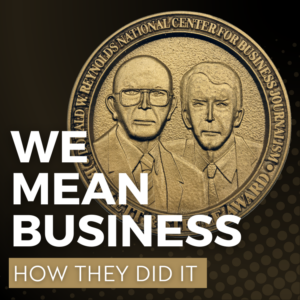For years, media coverage of live television streaming services like YouTube TV and Hulu + Live TV depicted them as “the future of TV.” These so-called vMVPD (virtual multichannel video programming distributor) platforms were apparently leading the charge against the widely reviled cable industry, known for its much-maligned customer service, price increases, and bloated channel packages. In the process, the vMVPDs would inspire more and more consumers to become “cord-cutters.”
Indeed, while cable (and satellite) TV remains the norm across much of the country, 64% of U.S. households have either cut the cord or plan to, or never subscribed to cable to begin with (“cord-nevers”), according to a survey by The Trade Desk.
With such a substantial percentage of households leaving cable, live TV streaming by these platforms is clearly no longer an insurgent industry, and therefore business journalists should stop depicting it as such.
But vMVPDs, several of which are owned by prominent players within cable and satellite TV, now exemplify many of the same problems as traditional TV. This prompts the question of whether live TV streaming was ever truly a revolution. Business journalists should also express more caution in the future when stagnant incumbents control a supposedly transformative new product.
Polluted ocean strategy
Dish Network’s 2015 creation of Sling TV is widely cited as the innovation that pushed the vMVPD phenomenon to the mainstream.
Dish, of course, is one of the same companies responsible for the declining legacy model of television.
While there is nothing inherently wrong with an industry incumbent engaging in “blue ocean strategy” — seeking novel markets to avoid intense competition in established fields — media and consumers alike should have calibrated their expectations of new business practices accordingly. They should especially have become wary when Dish was joined by cable stalwarts such as AT&T (with AT&T TV Now, formerly DirecTV Now) and Comcast (which owns 33% of Hulu, operator of Hulu + Live TV).
None of this parentage would be significant if the live TV providers were actually forging a new path, and resolving the issues that have made so many abandon cable.
But consumers have, as usual, paid a steep price for small increases in channel coverage on vMVPDs. YouTube TV’s price has nearly doubled, from $35/month to $65/month, since February 2018, including a $15 increase during the coronavirus pandemic. Upstart fuboTV has gone from $35/month to $60/month since launch. Neither of these vMVPDs is controlled by a traditional TV power, yet even they have adopted the unpopular tactics of the industry.
Joyless bundles
YouTube TV and fuboTV’s price increases have primarily been driven by the addition of new channels from Turner, Viacom, and Discovery Inc. As Sara Fischer wrote for Axios in 2019, what were once known as “skinny bundles” for their narrow channel selections are becoming “fatter,” as customers seek to abandon cable without losing a significant number of networks.
Bloomberg Opinion’s Tara Lachapelle put it quite succinctly: “If you want streaming to look like cable, you’ve got to pay cable prices. Not even Google will eat those losses forever.” Sony refused to continue taking losses and had to shut down its vMVPD, PlayStation Vue.
The remaining companies have repeatedly made their vMVPDs more comprehensive, and thus more expensive, to account for an assumed consumer preference. Sling is still the “skinniest,” and so cheapest, of the popular services, with its $30/month “blue” and “orange” packages that can be combined into a $45/month hybrid. Yet even Sling, which was $20/month at launch, has been, by Dish’s own CEO’s admission, “dragged into” becoming a “direct replacement” for cable by its competition.
Despite all these efforts, only a third as many people signed up for vMVPDs as left cable in 2019, suggesting what former Sling executive Warren Schlichting calls “a wholesale rejection of the pay TV business model.”
The convergence between traditional television and vMVPDs continues, and the failure to address the central problems of cable persists. The whole situation is a testament to the importance of healthy skepticism in business journalism. When an established company signals its plans to do something different, yet fundamentally relies upon the same assets and tactics, that’s not innovation.











